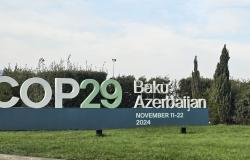Coping with COP29: Impressions before the Closing Session

Petra Minnerop asks whether we can we place hope in carbon markets?
Conferences of Parties (COPs) are huge global events. Towards the end of this year’s climate summit and ahead of the closing session that has yet to be scheduled (expected to be delayed by at least one day), the hustle and buzzing has ended and the wait for new texts on key agenda items, developed in negotiations that continued into the early morning hours, has started. Given the number of delegates present, it is a surprisingly quiet start of the day that had been expected to mark the end of the 29th Conference (COP29). In reviewing progress made so far, can we place new hope in carbon markets?
The Business of COPing
According to data released so far, 66778 in person and around 3975 virtual participants registered for COP29. This includes 33158 party representatives (excluding “overflow” delegates who are not authorised to speak on behalf of their country) of 195 State Parties to the United Nations Framework Convention (UNFCCC) and the Paris Agreement. Delegation sizes vary significantly, for example, the host country, Azerbaijan has the strongest representation with 995 members and additional 1,234 overflow delegates. Before COP28 in Dubai, Azerbaijan usually only had six delegates. The second largest delegation comes from Brazil with 1914 participants, followed by Turkey with 1892 delegates. Turkey has a keen interest to be well represented, as the country has applied to host COP31, after next year’s COP30 in Brazil. The UK was represented by 54 delegates and additional 416 overflow members. There are much smaller delegations, for example, Iceland’s delegation had ten delegates and 37 overflow members. A strong delegation comes with obvious benefits in respect of presence on the ground, information collection and sharing, preparation of interventions, and coverage in negotiation rooms.
Many non-governmental organisations (NGOs) faced difficulties to obtain more than one badge, especially universities in the Global North. Around 9881 delegates from NGOs registered, in addition to 3575 media delegates. Final attendance numbers will be confirmed after the closing session.
The Mandate of COPs: Reviewing obligations on the “basis of all information available”
The State Parties at COPs are legally obliged to review their progress vis-à-vis the objectives of the UNFCCC and the Paris Agreement. The mandate is clearly outlined in Article 7 of the UNFCCC, and it also applies to the Paris Agreement’s meeting of the Parties (CMA).
Countries are called to periodically examine their obligations and the institutional arrangements under the UNFCCC. This is important to note: COPs are not “just” about policy, they are about reviewing legal obligations.
Furthermore, the mandate extends to
“Assess, on the basis of all information made available […] the implementation of the Convention by the Parties, the overall effects of the measures taken pursuant to the Convention, in particular environmental, economic and social effects as well as their cumulative impacts and the extent to which progress towards the objective of the Convention is being achieved.”
Accordingly, this year’s 29th conference (COP29) should review obligations on the basis of all information available to it. This entails to consider the scientific evidence that has been provided in various reports, including the 2024 UNEP Gap Report, the IPCC AR6 Reports, and the so-called NDC Synthesis Report released in October 2024. The latter report summarises the effects that all nationally determined contributions (NDCs) of countries would have on our current climate change trajectory, assuming that these pledges would be fully implemented.
The UNFCCC Secretariat provides this update each year ahead of COP, to enable countries to fulfil their mandate and to review the legal obligations in light of the science.
It is important to note that these scientific reports conclude that we have the following shortfall when comparing the actual emissions and the emissions reductions required for scenarios commensurate with the internationally endorsed temperature threshold of limiting warming to 1.5 °C:
Total greenhouse gas (GHG) emissions will be
“(a) In 2025, 54.0 per cent higher than in 1990 (34.4 Gt CO2 eq), 11.3 per cent higher than in 2010 (47.6 Gt CO2 eq) and approximately the same as in 2019 (52.9 Gt CO2 eq). […]
(b) In 2030, 49.8 per cent higher than in 1990, 8.3 per cent higher than in 2010 and 2.6 per cent lower than in 2019.”
The IPCC stated in the contribution of Working Group III to the AR6 that in scenarios of limiting warming to 1.5 °C (with over 50 per cent likelihood by 2100) with no or limited overshoot over the course of the century, that GHG emissions must be reduced by 43 (34–60) per cent by 2030 relative to the 2019 level. There is still a possibility that global emissions will peak before 2030. However, the Synthesis Report is clear that the absolute difference in the level of emissions by 2030, according to the latest NDCs, and these IPCC scenarios, is “sizeable”.
Carbon Markets to the Rescue?
The Paris Agreement sets out various instruments to enable countries to achieve the global temperature limitation through ambitious and stringent collective efforts. Only through continued international collaboration in the negotiations, coupled with decisive diplomatic leadership through the respective host-country’s Presidency, can countries keep the long-term goals within reach.
At the beginning of COP29, breakthrough was reported for one of the key instruments, the so-called market-based mechanisms under Article 6 of the Paris Agreement. There are two options under that provision: the cooperative approaches that operate directly between countries or private entities and countries, and the Sustainability Mechanisms that functions under the oversight of a Supervisory Body. It is important to note that the agreed methodologies were so far only adopted by the Supervisory Body which is fully accountable to the CMA, and that they relate to the Sustainability Mechanism as one of the two instruments of Article 6. These methodologies are intended to provide the basis for claiming and assessing of creditable emission reductions or removals under that particular mechanism. Parties are still required to adopt a decision for both mechanisms, the cooperative approaches under Article 6 paragraph 2 and the Sustainability Mechanisms under Article 6 paragraph 4.
Negotiations under both options are technical and challenging and as expected, this year’s COP so far has seen the resurfacing of tensions between negotiating blocs. Even though some fundamental rules exist, adopted at COP26 in Glasgow (Decision 2/CMA.3 and Decision 3/CMA.3), there are more detailed issues that require further negotiations and decision-making by Parties. These include the registration of emission credits in national and UNFCCC registers, the inter-operationality between registers, and the application of baseline scenarios to demonstrate the additionality of emission reductions achieved through projects.
A decision on carbon markets is expected at the end of this COP, but the negotiating texts so far reveal that uncertainties with respect to methodological consistency and avoidance of double counting will persist. Tradeable carbon credits must be real, transparent, conservative, credible and reduce emissions to “below business as usual”, according to existing rules. These criteria are designed to instill some discipline for markets – but they require further scientific and legal clarifications.
The stakes are high – the global carbon market that will emerge from Article 6 enables Parties to demonstrate compliance with their NDCs, by using a combination of domestic and internationally traded emissions reductions. Double counting or trading with “imagined”, “unreal” or “junk” emission reductions will mask non-compliance with countries’ climate targets.
Emissions reductions that are transferred from one country to another, can only be used by one State Party. To avoid double usage of credits, the selling State Party must undertake a “corresponding adjustment”. It means that the seller’s emissions increase, while the emissions of the buying Party will decrease after the transaction. Only one Party can use the credits to demonstrate compliance with its NDC. If carbon credits are real, verified, measurable and additional, then cooperative approaches could leverage the potential of achieving additional emission reductions and enhance ambition in mitigation and adaptation. It is also important to consider the life-time of credits, given that not all traded emissions reductions will be permanent.
Meanwhile, some of the impacts of climate change are already unavoidable and/or irreversible. They can only be limited by real, deep, rapid, and sustained global greenhouse gas emissions reductions. Overshooting 1.5°C will result in additional irreversible adverse impacts on certain ecosystems such as polar, mountain, and coastal ecosystems, impacted by ice-sheet melt, glacier melt, and by accelerating and higher committed sea level rise.
Going forward, cooperation between governments, with private sector actors, and collaboration with academic experts remain critical to ensure that legal and quality standards and transparency are not compromised.
To find out more about Durham University’s research expertise in this field and how it can benefit your organisation, please contact the JusTN0W project team through Kate Morris, Senior Business Development Manager at kathryn.l.morris@durham.ac.uk or Dr Owen Boyle at owen.d.boyle@durham.ac.uk.
Professor Petra Minnerop works at the intersection of law and science in the context of sustainability, climate change and environmental degradation. Her research addresses how the law can be used to effectuate change in light of scientific evidence, to address global environmental crises. She uses comparative legal analysis and interdisciplinary methods and has published widely on climate change, environmental law and policy and international law.
Image: Author's Own.


